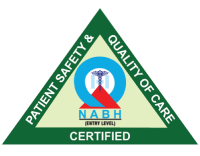Pregnancy is a wonderful experience, but also with its fair share of anxieties and obligations. As expecting parents, one of the foremost measures to be taken for ensuring the health and well-being of both mother and child is prenatal screening.
While there are a multitude of tests that can be conducted, double marker test in pregnancy is crucial in determining your baby’s well-being in advance. If you’re curious to know what the double marker test is, how it’s performed, and what the results indicate, this blog post has got you covered.
What is the Double Marker Test in Pregnancy?
Double marker test during pregnancy is a form of blood test that screens for some genetic conditions and fetal birth defects. It is conducted usually in the first trimester, between weeks 9 and 13 of pregnancy.
“Double” in the name of the test means that the two markers—namely, PAPP-A (Pregnancy-Associated Plasma Protein A) and free beta-hCG (human chorionic gonadotropin)—are the two specific markers that are measured in the blood of the mother. These markers are used to signify the possibility of the baby’s birth with a specific condition, like Down syndrome trisomy 21 and trisomy 18.
Procedure of the Double Marker Test
The process of the double marker test is very straightforward and less invasive:
- Blood Sample Collection: A health care worker will take a small sample of blood, typically from a vein in your arm.
- Laboratory testing: The blood is taken to a laboratory where the free beta-hCG and PAPP-A levels are determined.
- Result Calculation: The results of the tests are calculated based on several factors such as the mother’s weight, age, and medical history. The results provide an estimation of the likelihood of the baby developing certain conditions.
The test is safe and free of risk for the mother and the baby. It’s a great way to assess the risk of certain genetic disorders at the start of pregnancy.
Benefits of the Double Marker Test
The double marker test during pregnancy has a number of advantages, which are:
- Early Detection: One of the main benefits of this test is that it can identify potential problems early in pregnancy. Early detection facilitates informed decisions and enables interventions in a timely manner if required.
- Non-invasive: Contrary to some of the other prenatal tests, including amniocentesis, the double marker test is non-invasive. It simply needs a blood sample, and thus it is a safe and painless option for pregnant women.
- Evaluating the Risk for Genetic Disorders: This test assists in estimating the risk of the baby being born with Down syndrome and trisomy 18, which may lead to delays in development and other medical conditions.
- Peace of Mind: If everything is normal when the double marker test is run, it is able to give the parents a peace of mind during the beginning of pregnancy. But if results indicate a greater risk, this provides an option for further monitoring and testing for the sake of the baby’s health.
- Cost-effective: Compared to other screening tests, the double marker test cost is relatively affordable, making it accessible to many women during their pregnancy.
Understanding Double Marker Test Results
Once the test has been done, it is then necessary to comprehend the double marker test result and what this entails for your pregnancy. The outcome is normally provided in terms of a risk ratio. For instance, the test can report that there is 1 in 1000 probability of the baby having a condition, or a 1 in 50 possibility.
Double Marker Test Normal Values
When interpreting the findings, it’s useful to know the double marker test normal values. Normal values of PAPP-A and free beta-hCG differ from woman to woman but typically:
- PAPP-A: Abnormally low levels of this protein may suggest a higher risk of genetic disorders.
- Free beta-hCG: Elevated levels of this hormone are also associated with some conditions, including Down syndrome.
Your results will be used by your doctor to determine the probability of the baby having a chromosomal defect. Remember, a “normal” test result doesn’t promise a healthy pregnancy, but it decreases the possibility of some conditions dramatically.
Double Marker Test Positive and Negative Results
If the double marker test is positive, this indicates a higher risk of the baby having a genetic disorder, like Down syndrome or trisomy 18. A positive result, however, does not guarantee that the baby has the condition; it only means that there is a greater chance. Further diagnostic tests, such as amniocentesis or chorionic villus sampling (CVS), might be suggested to verify the diagnosis.
On the other hand, a negative result means that the test did not indicate an increased risk for these conditions. This is generally considered a reassuring outcome, but it doesn’t completely rule out the possibility of other issues that may not be detected by the double marker test.
Double Marker Test Report Images
Though the majority of healthcare providers will tell you the results themselves, double marker test normal report photos can assist in picturing how your report can appear. They usually display for you the free beta-hCG levels and PAPP-A along with a calculated risk ratio. These help you place the results in perspective and put them into context in order to reduce your feeling of bewilderment.
Difference Between Double Marker and Triple Marker Test
You might also want to understand the distinction between the double-marker and triple-marker tests. Both are blood tests that are utilized in prenatal screening, but they vary with respect to the markers they assess:
- Double Marker Test: Measures PAPP-A and free beta-hCG.
- Triple Marker Test: Measures PAPP-A, free beta-hCG, and AFP (Alpha-Fetoprotein).
The triple marker test provides additional information, especially regarding the risk of neural tube defects, like spina bifida. However, the double marker test is still an essential tool, particularly in early pregnancy, to assess chromosomal abnormalities.
Dual Marker Test in Pregnancy: Is It the Same?
A few individuals call the double marker test during pregnancy, which is nothing but another name for the double marker test. Both names imply the same test that calculates two significant markers (PAPP-A and free beta-hCG) to determine chromosomal abnormality risk.
When to Take the Double Marker Test
The optimal time to perform the double marker test during pregnancy is between weeks 9 and 13 of pregnancy. That is when the markers one is attempting to quantify are most accurate, and when risk for disorders such as Down syndrome is simplest to determine. In case you fail to do so, your doctor might suggest a different test, like the triple marker test or non-invasive prenatal testing (NIPT).
Also Read:- https://karpagamhospital.in/pregnancy-symptoms-in-tamil/
Conclusion
The double marker test, a routine screening test for pregnant women, is a painless and safe way of checking the chances of genetic disorders in the foetus. Being aware of the procedure, benefits, and result will enable you to make informed choices about your health and pregnancy.
If you want individualised care, don’t be afraid to see the top gynaecologist in Coimbatore. They can help you navigate your prenatal journey and provide knowledgeable guidance on prenatal screening.
Remember, a positive or negative result does not define the outcome of your pregnancy, but it provides valuable insight into potential risks, allowing you to take appropriate steps in consultation with your doctor.
For more information on pregnancy care, screenings, and prenatal health, reach out to trusted healthcare providers like Karpagam Hospital. Let’s make this beautiful journey a safe and happy one!
About Karpagam Hospital
Karpagam Hospital is dedicated to healthcare excellence, offering exceptional medical services with compassion and integrity. As a not-for-profit institution, we prioritize ethical medical research and actively support underserved rural communities. Our resources are responsibly managed to enhance education, patient care, and infrastructure, reflecting our commitment to societal and environmental well-being.
Disclaimer:
The information provided in this blog post is intended for general informational purposes only. It is not a substitute for professional medical advice, diagnosis, or treatment. Always seek the advice of your physician or other qualified healthcare provider with any questions you may have regarding a medical condition. Never disregard professional medical advice or delay in seeking it because of something you have read in this blog.








